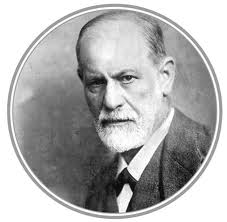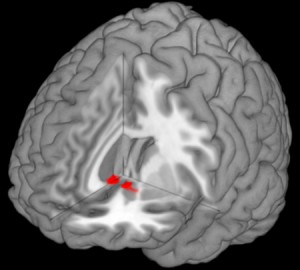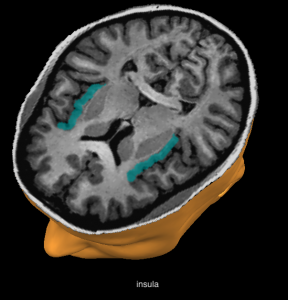The more I learn about the workings of the human brain – the more I am stirred by feelings that Freud may have been right. Although his theories have long since been discredited, he characterized the brain as a battle ground where three forces jockeyed for control over your decision making. There was the Id whose hedonistic impulse drove us toward self pleasuring. And then there was the conscientious Superego whose role was to compel us to make moral decisions. Finally, he believed there was the Ego whose job was to mediate between the drives of Id and Superego so as to facilitate adaptive navigation of the real world.

Freud’s theories have always been compelling because they feel right. I often feel as if there is a tug of war going on inside my head. The struggles occur in the form of decisions to be made – whether its about ordering french fries or a salad, fish or steak, having a cookie or an apple, exercising or relaxing, jumping over that crevasse or avoiding it, buying a new coat or saving the money. These battles are seemingly between good choices and bad ones. But, where you place the good and the bad is highly contingent on one’s priorities in the moment. The fries, steak, cookie, relaxing and that new coat all seem like good ideas in the moment – they’d bring me pleasure. On the other hand, there are the downstream consequences of unnecessary calories from fat and sugar or squandered resources. It’s a classic Id versus Superego battle.
But of course there are no entities in the human brain whose express duties are defined as Freud characterized them.
Or are there?
Well actually, there are brain regions that do wage contentious battles for control over your behaviors. Across time, different modules assert greater amounts of control than others, and thus, the choices we make, do likewise vary in terms of quality. As a result of advances in technology and understanding, we are becoming increasingly aware of the key factors associated with this variation.

One of the centers that play out in our multi-component brain is the dopamine reward pathway. Dopamine is a neurotransmitter that serves a number of important functions in the brain. One of its most significant roles plays out as a result of activation of the Nucleus Accumbens (NAcc). When the NAcc is activated it floods the brain with dopamine and we experience pleasure. Desire for an item activates the NAcc. Being in the presence of the desired item activates it further. The greater the arousal of the NAcc the more pleasure we experience. It is your NAcc that is responsible for the happiness you feel when you both anticipate and eat those fries or that steak or buy that new coat. It is also responsible for that rush you feel when your team wins the big game (Lehrer, 2009).

Then there is the Insula – a brain region that produces, among other sensations, unpleasantness. This center “lights up” in brain scans when people feel pain, anticipate pain, empathize with others, see disgust on someone’s face, are shunned in a social settings, or decide not to buy an item. In many cases we avoid exciting the Insula as it is the system that produces the unpleasantness of caffeine or nicotine withdrawal and the negative feelings associated with spending money (Blakslee, 2007; Lehrer, 2009). When you are jonesing for that coffee or nicotine fix, it is your Insula that is making you feel badly – necessarily compelling you to feed the habit. And when you satisfy the craving it is your NAcc that gives you that Ahhhhh! – that sense of well being.
Perhaps the NAcc is Freud’s Id and the Insula Freud’s Superego? It is actually much more complicated than this, but the overlap is interesting.
In an article I posted last month I wrote about the concept of an Alief. An Alief is a primal and largely irrational fear (emotion) that arises from the deep unconscious recesses of your brain and plays a significant role in guiding some of the decisions you make. At a very basic level, we know of two major driving forces that guide our decisions. Broadly, the two forces are reason and emotion. So how does this work? How do we process and deal with such diverse forces?

Neuroscientists now know that the OrbitoFrontal Cortex (OFC) is the brain center that integrates a multitude of information from various brain regions along with visceral emotions in an attempt to facilitate adaptive decision making. Current neuroimaging evidence suggests that the OFC is involved in monitoring, learning, as well as the memorization of the potency of both reinforcers and punishers. It analyzes the available options, and communicates its decisions by creating emotions that are supposed to help you make decisions. Next time you are faced with a difficult decision, and you experience an associated emotion – this is the result of your OFC’s attempt to tell you what to do. Such feelings actually guide most of our decisions without us even knowing that it is happening.
The OFC operates outside your awareness: opaquely communicating with your rational decision making center using the language of feelings. Our rational center, the Prefrontal Cortex, the more apt Freudian Ego analogy, is not as predominant as he suggested. In fact, it is limited in capacity – both easily fatigued and overly taxed. See my post on Willpower for a deeper discussion of this issue.
So, as crazed as we view Freud’s notions today, there were some aspects of his explanation of human behavior that were rooted in actual brain systems. As I previously noted, these systems are much more complicated than I have described above, but in essence, there are battles waged in your head between forces that manipulate you and your choices through the use of chemical neurotransmitters. A portion of these battles occur outside your awareness, but it is the influence of the emotions that stem from these unconscious battles that ultimately make you feel as though there is a Devil (Id) on one shoulder and an angel (Superego) on the other as your Prefrontal Cortex (Ego) struggles to make the best possible decision.
By understanding these systems you may become empowered to make better decisions, avoid bad choices, and ultimately take more personal responsibility for the process. It’s not the Devil that made you do it, and it’s not poor Ego Strength – necessitating years of psychotherapy. It is the influence of deeply stirred emotions and manipulation occurring inside of you and perhaps some over dependence on a vulnerable and easily over burdened Prefrontal Cortex that leads you down that gluttonous path.
References
Blakeslee, Sandra. 2007. Small Part of the Brain, and Its Profound Effects. New York Times.
Gladwell, M. 2005. Blink: The Power of Thinking Without Thinking. Little, Brown and Company: New York.
Guild, G. 2010. Retail Mind Manipulation. How Do You Think?
Guild, G. 2010. What Plato, Descartes, and Kant Got Wrong: Reason Does Not Rule. How Do You Think?
Guild, G. 2010. Willpower: What is it really? How Do You Think?
Guild, G. 2011. Irrational Fear: It’s Just an Alief. How Do You Think?
Lehrer, J. 2009. How We Decide. Houghton Mifflin Harcourt: New York.

Pingback:The Guilt – Empathy Connection - How Do You Think?